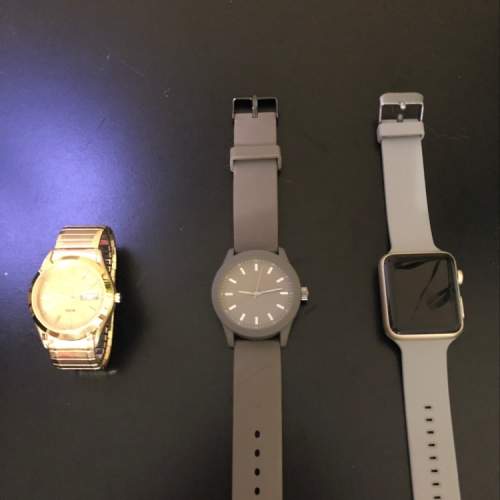
Business, 11.03.2020 22:20 jimarieb08
On January 3, Year 5, Ard Corp. owned a machine that had cost $60,000. The accumulated depreciation was $50,000, estimated salvage value was $5,000, and fair market value was $90,000. On January 4, Year 5, this machine was irreparably damaged by Rice Corp. and became worthless. In October Year 5, a court awarded damages of $90,000 against Rice in favor of Ard. At December 31, Year 5, the final outcome of this case was awaiting appeal and was, therefore, uncertain.
However, in the opinion of Ard's attorney, Rice's appeal will be denied.
At December 31, Year 5, what amount should Ard accrue for this gain contingency?
a) $90,000
b) $80,000
c) $75,000
d) $ -0-

Answers: 2
Another question on Business

Business, 22.06.2019 02:30
Required information [the following information applies to the questions displayed below.] the following data is provided for garcon company and pepper company. garcon company pepper company beginning finished goods inventory $ 13,800 $ 18,850 beginning work in process inventory 16,700 20,700 beginning raw materials inventory 8,800 13,500 rental cost on factory equipment 28,250 26,650 direct labor 22,400 37,400 ending finished goods inventory 17,300 14,300 ending work in process inventory 23,200 19,400 ending raw materials inventory 5,900 9,600 factory utilities 11,250 15,000 factory supplies used 10,900 5,700 general and administrative expenses 32,500 44,500 indirect labor 2,500 9,880 repairs—factory equipment 4,820 2,150 raw materials purchases 41,500 63,000 selling expenses 54,800 49,000 sales 238,530 317,510 cash 33,000 23,700 factory equipment, net 222,500 124,825 accounts receivable, net 13,400 23,950 required: 1. complete the table to find the cost of goods manufactured for both garcon company and pepper company for the year ended december 31, 2017. 2. complete the table to calculate the cost of goods sold for both garcon company and pepper company for the year ended december 31, 2017.
Answers: 2

Business, 22.06.2019 08:00
Shrieves casting company is considering adding a new line to its product mix, and the capital budgeting analysis is being conducted by sidney johnson, a recently graduated mba. the production line would be set up in unused space in the main plant. the machinery’s invoice price would be approximately $200,000, another $10,000 in shipping charges would be required, and it would cost an additional $30,000 to install the equipment. the machinery has an economic life of 4 years, and shrieves has obtained a special tax ruling that places the equipment in the macrs 3-year class. the machinery is expected to have a salvage value of $25,000 after 4 years of use. the new line would generate incremental sales of 1,250 units per year for 4 years at an incremental cost of $100 per unit in the first year, excluding depreciation. each unit can be sold for $200 in the first year. the sales price and cost are both expected to increase by 3% per year due to inflation. further, to handle the new line, the firm’s net working capital would have to increase by an amount equal to 12% of sales revenues. the firm’s tax rate is 40%, and its overall weighted average cost of capital, which is the risk-adjusted cost of capital for an average project (r), is 10%. define “incremental cash flow.” (1) should you subtract interest expense or dividends when calculating project cash flow?
Answers: 1

Business, 22.06.2019 13:40
Determine if the following statements are true or false. an increase in government spending can crowd out private investment. an improvement in the budget balance increases the demand for financial capital. an increase in private consumption may crowd out private investment. lower interest rates can lead to private investment being crowded out. a trade balance in sur+ increases the supply of financial capital. if private savings is equal to private investment, then there is neither a budget sur+ nor a budget deficit.
Answers: 1

Business, 22.06.2019 17:30
Google started as one of many internet search engines, amazon started as an online book seller, and ebay began as a site where people could sell used personal items in auctions. these firms have grown to be so large and dominant that they are facing antitrust scrutiny from competition regulators in the us and elsewhere. did these online giants grow by fairly beating competition, or did they use unfair advantages? are there any clouds on the horizon for these firms -- could they face diseconomies of scale or diseconomies of scope as they continue to grow? if so, what factors may limit their continued growth?
Answers: 1
You know the right answer?
On January 3, Year 5, Ard Corp. owned a machine that had cost $60,000. The accumulated depreciation...
Questions


Biology, 24.08.2020 05:01



Mathematics, 24.08.2020 05:01



History, 24.08.2020 05:01

Chemistry, 24.08.2020 05:01

Social Studies, 24.08.2020 05:01

Mathematics, 24.08.2020 05:01



Mathematics, 24.08.2020 05:01


Mathematics, 24.08.2020 06:01

Mathematics, 24.08.2020 06:01

Mathematics, 24.08.2020 06:01


Mathematics, 24.08.2020 06:01




